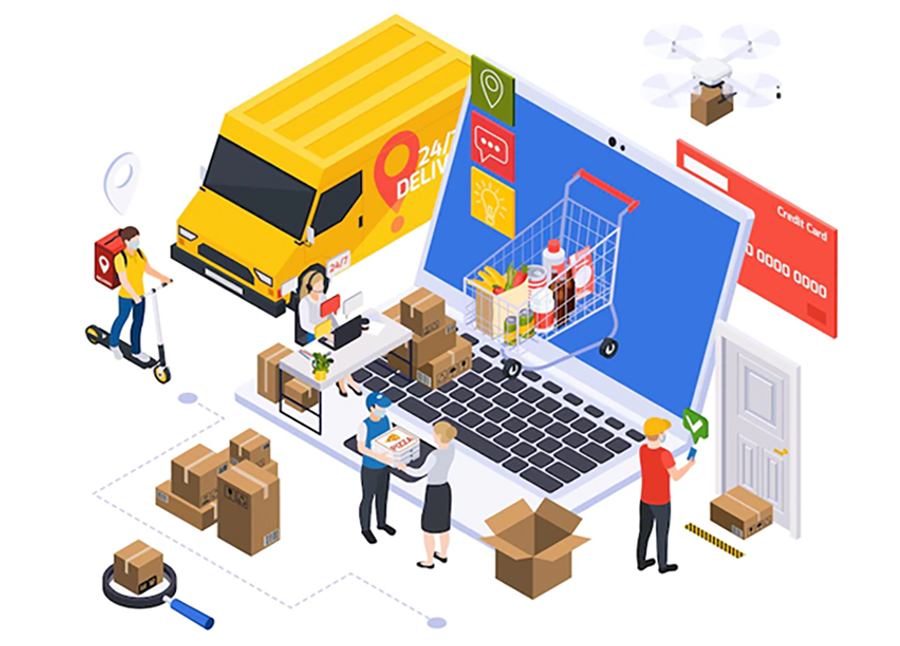Will logistics and supply chain be the game changer for retail in 2023?
By N Jayalakshmi | December 26, 2022
Online behemoths like Amazon have redefined how Indians shop for their stuff - from personal care to consumer goods and groceries. Enabling this is a seamless logistics and supply chain system. The inventory management and logistics capability have in fact emerged to be so critical that it could well be the make or break factor for retail.

I confess I am part of the ever-growing tribe of Indians who have tasted the sweet fruit of online/digital shopping. We are spoilt, not just by the sheer variety, but also by the luxury of quick and easy delivery of our purchases - whether it's clothes, fashion accessories, household items or groceries. It, therefore, came as an unpleasant surprise to see a leading offline retail chain’s online platform fumble on its inventory management and delivery system. It started as a simple enough process. I was e-shopping for a kitchen appliance, and I found it on their website, added it to the shopping cart, made the payment and waited. Having gotten used to this process, I forgot all about it, relying on the ‘in transit’ status of my shipment. After a few more days of waiting, I was in for a rude shock when I got a message from the retailer saying my order was cancelled! It turns out they suddenly realized the item in question was not in stock, although their website gave no indication of that. After some not-so-pleasant back and forth, they finally refunded the amount I paid. This could be an isolated incident. Unfortunately, it wasn’t. I faced a similar situation with two other retailers, both established retail brands in their way.
Initially, I offered them an excuse - online is a new beast and they are still figuring out the dynamics of it. But then, as someone else pointed out, they should have stayed out of it until they had got their whole inventory management and logistics system in place.
The fact is, newer categories of shoppers have now taken to the convenience of online shopping, shoppers who were previously averse to the click-buy-pay mode of shopping. The pandemic may have accelerated the process, but it was certainly coming. Most brands lost no time in hopping on to the omnichannel bandwagon. But research suggests that not all of them really thought through what omnichannel meant. The fact is that retail touchpoints are evolving. An exclusive stand-alone store in a mall could, in the not-so-distant future, transform into a pop-up store in a residential complex, only to emerge later in its digital avatar in the Metaverse. But the customer at the other end is still looking for convenience, delight and value for her money. Facilitating all of this is an efficient inventory, supply chain and logistics system.
As a Mckinsey report on Supply Chain of the Future says, “The consumer product and retail landscape continues to evolve as companies race to catch up with leading e-tailers. Traditional brick-and-mortar retailers such as Macy’s, Nordstrom, and Walmart are expanding their online offerings and introducing new models, such as in-store fulfilment of online orders. Online players such as Amazon and Zalando are opening their brick-and-mortar stores. Vertically integrated players such as Bose, Burberry, and Nike are strongly pushing their direct-to-consumer business through both online and new physical stores. And players of all kinds are complementing their physical stores and e-commerce offerings with innovative applications and social media to mount a truly omnichannel presence. However, many players still struggle with omnichannel success given the requirements it places on their supply chains—especially in terms of speed, complexity, and efficiency. Customers expect to receive their products anytime and anywhere with a very short time between order and delivery, with excellent service and high convenience. Our research shows that service represents the primary factor that brands and retailers can use to differentiate themselves and “delight” omnichannel shoppers.”
Inventory management, logistics and supply chain are all interrelated but each is an independent area by itself and there are enough indicators that show that a retail brand’s success would depend a lot on the above. And interestingly, it’s not just pure play e-commerce brands that would need a robust back-end logistics system. As mentioned earlier, traditional brick-and-mortar players are getting on the digital platform as an inevitable choice and this would mean discovering and scaling up their logistics and inventory system to match new dynamics. This, in turn, would also mean newer alliances and partnerships and the entry of more solution providers who can help these brands strengthen their logistics /inventory /supply chain in newer ways that are aligned to the omnichannel eco-system. Some interesting times are in store ahead for the retail eco-system.









Comments